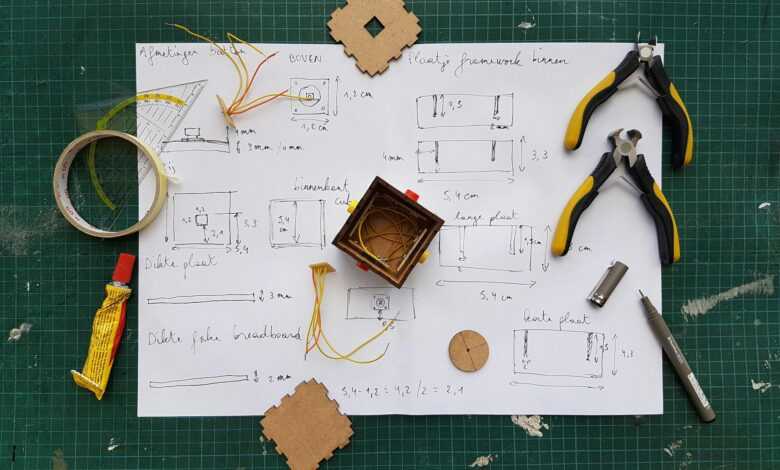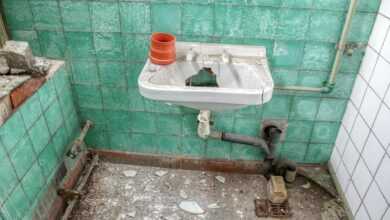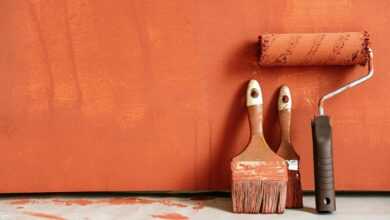
Getting Started with DIY: Essential Tools for Every Beginner
DIY, or “Do It Yourself,” has become more than just a trend—it’s a valuable skill that offers numerous benefits. Whether you’re looking to save money, personalise your space, or simply enjoy the satisfaction of completing a project on your own, DIY can be a fulfilling endeavour. For many, the idea of tackling home repairs or creative projects can seem daunting, but with the right tools and a bit of guidance, anyone can become a confident DIYer.
Having the correct tools from the outset is crucial. The right tools not only make your work easier but also safer and more efficient. Starting your DIY journey with a well-stocked toolbox ensures that you’re prepared for a variety of tasks, from hanging a picture frame to fixing a leaky tap. This article will guide you through the essential tools every beginner should have, explain their uses, and provide tips on how to invest wisely in quality equipment.
Basic Tools You Need
1. Hammer
A hammer is one of the most basic tools, and it’s indispensable for any DIY project. There are several types of hammers available, but for beginners, a claw hammer is the most versatile. The claw hammer has a flat side for driving nails into surfaces and a curved, claw-like end for removing nails. It’s ideal for general tasks like hanging pictures, assembling furniture, or even minor demolition work.
For more specialised tasks, you might consider a rubber mallet, which is useful for tasks that require a softer touch, such as assembling flat-pack furniture without damaging the surfaces. Another option is a ball-peen hammer, which is primarily used for metalwork.
2. Screwdrivers
Screwdrivers are essential for assembling, tightening, and repairing just about anything in your home. The two most common types are flathead and Phillips screwdrivers. A flathead screwdriver has a single, straight slot and is used for screws with a straight, horizontal groove. A Phillips screwdriver, on the other hand, has a cross-shaped tip that fits into screws with a corresponding cross-shaped slot.
For most DIY tasks, it’s advisable to have a set of screwdrivers in various sizes, or better yet, a multi-bit screwdriver. Multi-bit screwdrivers come with interchangeable heads, which means you can switch between flathead, Phillips, and other specialised bits (like hex or Torx) as needed, all using the same handle. This not only saves space but ensures you’re ready for any type of screw.
3. Tape Measure
Precision is key in DIY, and a tape measure is essential for getting accurate measurements. Most tape measures are retractable, with a locking mechanism that allows you to hold the tape in place once you’ve extended it to the desired length. This tool is crucial for tasks like measuring spaces for furniture, cutting materials to size, and ensuring that items are aligned correctly.
When choosing a tape measure, look for one that has both metric and imperial measurements, as this will make it easier to follow different instructions. The standard length for most DIY tasks is around 5 to 8 metres, which is sufficient for measuring rooms and larger objects.
4. Utility Knife
A utility knife, also known as a box cutter, is a versatile tool used for cutting various materials, including cardboard, plastic, and even thin wood. It’s an essential tool for tasks like opening boxes, trimming wallpaper, or scoring materials before cutting.
Safety is paramount when using a utility knife. Always retract the blade when not in use, and store it in a safe place. When cutting, use a straight edge or ruler to guide the blade for a cleaner, more precise cut.
5. Pliers
Pliers are incredibly useful for gripping, twisting, and cutting wires or small objects. There are several types of pliers, but a basic DIY toolkit should include a pair of combination pliers, which can perform a range of functions including cutting and gripping.
Needle-nose pliers, with their long, narrow tips, are particularly useful for working in tight spaces or handling small components. If you plan on doing any electrical work, a pair of wire strippers or crimping pliers can also be invaluable.
6. Spirit Level
A spirit level, also known as a bubble level, ensures that your work is perfectly horizontal (level) or vertical (plumb). This tool is crucial for tasks like hanging shelves, aligning pictures, or installing kitchen cabinets. A small, 20-30 cm spirit level is usually sufficient for most DIY tasks, although longer levels are available for larger projects.
To use a spirit level, simply place it on the surface you’re working on. The bubble inside the vial will move, and when it’s perfectly centred between the lines, your surface is level.
7. Adjustable Spanner
An adjustable spanner, or wrench, is essential for any plumbing tasks or for tightening and loosening nuts and bolts of various sizes. Unlike fixed spanners, which only work with specific sizes of nuts, an adjustable spanner can be altered to fit a range of sizes, making it a versatile tool for any toolkit.
This tool is particularly useful for jobs like fixing leaks under the sink, assembling flat-pack furniture that uses bolts, or working on bicycle repairs.
Investing in Quality
Why Quality Tools Matter
Investing in quality tools is one of the best decisions you can make as a DIY enthusiast. High-quality tools are not only more durable but also perform better, which can make a significant difference in the ease and safety of your projects. Cheap tools might save you money in the short term, but they often wear out quickly, break under pressure, or fail to provide the precision you need, leading to frustration and potentially even accidents.
Where to Buy Reliable Tools Without Breaking the Bank
In the UK, several retailers offer a wide range of tools that cater to both beginners and professionals. Stores like B&Q, Screwfix, and Wickes are popular for their extensive selections and often have knowledgeable staff who can provide advice on the best tools for your needs. Online platforms like Amazon also offer competitive prices and a vast selection, though it’s essential to read reviews to ensure you’re purchasing from a reputable brand.
For those on a budget, it’s worth looking out for sales or considering second-hand tools, which can often be found in good condition at car boot sales, on eBay, or through local community groups.
Storage Tips
Keeping Tools Organised and Easily Accessible
Organising your tools is essential for efficient work. A cluttered workspace not only slows you down but can also be hazardous. Start by investing in a sturdy toolbox or tool bag where you can store your most frequently used tools. For those with more space, a pegboard mounted on the wall is an excellent way to keep tools visible and within easy reach.
Label your storage areas and group similar tools together, such as placing all your screwdrivers in one section and your pliers in another. This way, you’ll always know where to find what you need.
Maintenance Tips to Prolong the Life of Your Tools
To ensure your tools last as long as possible, it’s important to maintain them properly. After each use, wipe down your tools with a clean cloth to remove any dust, dirt, or moisture. This is particularly important for metal tools, which can rust if not cared for properly.
Store your tools in a dry place, and consider adding silica gel packets to your toolbox to absorb any moisture. Regularly check tools like screwdrivers and pliers for wear and tear, and sharpen blades on knives or chisels when they start to dull.
Embarking on your DIY journey is an exciting and rewarding endeavour. By investing in these basic tools, you’re setting yourself up for success in a wide range of projects. Remember, the right tools not only make your work easier but also ensure that you can tackle tasks safely and efficiently.
Whether you’re fixing a loose hinge, hanging a shelf, or planning a more ambitious home improvement project, these essential tools will be your best companions. Start with these basics, and as you gain confidence and experience, you can expand your toolkit with more specialised equipment. Happy DIYing!




